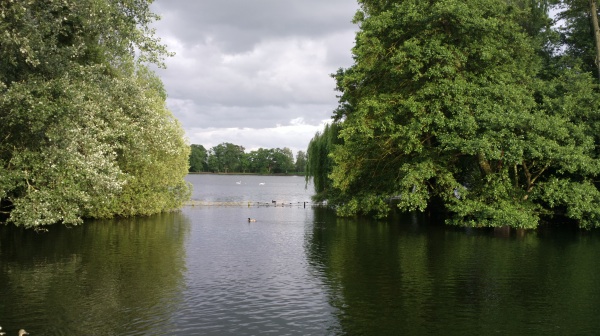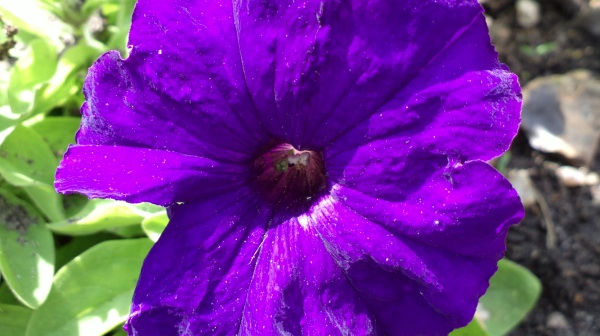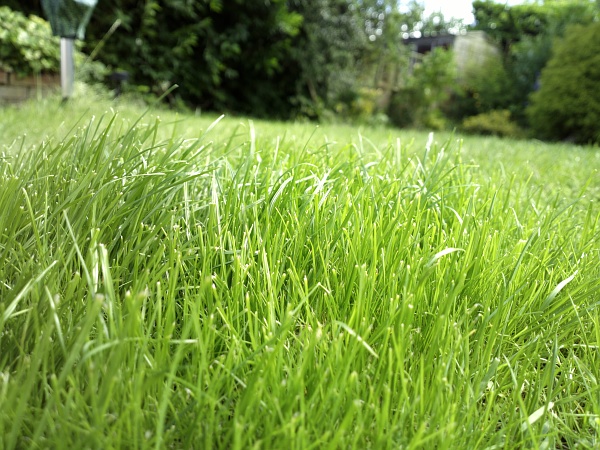Review: Nokia 808 PureView: part 1 (hardware, initial thoughts on performance and camera)
Symbian's 'last hurrah' is here at last, now in Western Europe and looking good. We've got a review Nokia 808 PureView in the house and here starts our in depth review coverage, starting with a look at the hardware and build, at the 808's performance and feel as a smartphone, and an initial look at the capability of its unique selling point, the monster 41 megapixel sensor and PureView processor.
The story so far
We've covered the 808 quite a bit already, of course, here on AAS:
February 2012, the Nokia 808 is announced at Mobile World Congress
March 2012, Rafe provides a detailed image gallery of his hands-on with the announced 808 at MWC
March 2012, I look at the 808's 'super-pixels', compared to the those in a typical competitor (iPhone 4S)
May 2012, Rafe got hands-on time with a late proto 808 and produced some thoughts and some lovely photo samples
May 2012, I put the Nokia 808 PureView head to head with the Samsung Galaxy S III in terms of specs and features
June 2012, Ow Kah Leong unboxed the first 808 PureView and have his first impressions
In addition to the coverage above, we've also linked out to some stunning examples on Flickr of photos produced by the Nokia 808, not least here (Finnish seagulls and coastline) and here (Finnish boat race). Amazing images and I'll have to admit that I can't guarantee to out-do these examples in test photos here in the UK. What I can guarantee is that our review coverage of the Nokia 808 PureView will be comprehensive and will span the rest of June and the whole of July.

Nokia 808 Review Plan
Here's how we intend to cover the 808. Not least because there's no Symbian hardware coming after it, we're going to take our time and review it properly:
Part 1 (this article) - hands on with the 808 PureView retail hardware, build quality, a recap of Unique Selling Points, what’s in the box, opinion so far of the 808 as a smartphone and any initial problems
Part 2a - camera stills and video overview, with samples of each, how it all works and initial comments
Part 2b - detailed stills comparisons in a wide range of conditions and of various subjects, c.f. N8 (and N82 and N86) and a competing smartphone (probably an iPhone 4S), i.e. by how far does it improve on the N8 and how do other 2012 camera smartphones compare?
Part 2c - exploration of creative modes and settings in the 808 stills camera, pushing the limits, exploring the interface
Part 2d - exploring video capture, zooming, options, samples, Rich Recording, comparisons, focus modes, etc.
Part 3 - Nokia Belle FP1 performance and multimedia handling
Part 4 - application set, patches and updates, the 808’s chances in the marketplace, prospects for support and updates, where it fits in Symbian history
Background
In somewhat simplistic terms, the Nokia 808 PureView is the latest in a long line of Nokia specialist camera-toting smartphones - devices which went beyond the call of duty to bring cutting edge imagery (and usually video capture) to users everywhere. From the transformer N93 to the Xenon-equipped N82, from the variable aperture N86 to the consummate all rounder N8, Nokia's one saving grace throughout a decade of turbulence in the industry is that it has this imaging specialism. (See here for my piece on phone camera innovations over the decade.)
Famously conceived after the relative failure of the N93, which had optical zoom (and numerous compromises as a result), the PureView system was then developed and refined over the years, waiting for technology to be available to make the idea of a massive sensor array and super-fast image processor practical. Now, this bit's important to note - PureView was developed from 2007 onwards on Symbian hardware and this is the reason we have the 808 PureView now.
With the new focus on Windows Phone, I'm sure Nokia would have loved to have put the PureView technology into a device on that platform, but that would have meant a delay, with the tech sitting in the labs waiting for a real world outlet. The PureView technology has been in development for five years and naturally the assumption has been that it would be running on Symbian OS. In addition to the custom hardware integration, the Gallery and Camera applications have been rewritten to accommodate new functions and performance requirements. The underlying platform is not something you can change over night, even if Windows Phone 7.5 allowed the kind of flexibility in its imaging implementation that is necessary to support the custom software and imaging chipset that goes along with the Nokia 808's camera module. As Rafe noted it his earlier piece Nokia has made clear from the start is that PureView will be used in "multiple future products". While Nokia never talks about the specifics of a future products, it is clear that the intention is to move PureView to the Windows Phone Lumia range later this year. The likelihood is that the sensor size and megapixel count will come down in order to meet the constraints of a thinner device design (i.e. less of a camera hump). That does mean that the 808 PureView is likely to remain the ultimate cameraphone device for some time to come.
In that light, critics of Symbian can justifiably view the 808 PureView as a technology demonstrator. However, for regular All About Symbian readers, the 808 fulfills a second role - the last, fastest, greatest Symbian smartphone ever. There's verry little chance we'll see any more Symbian hardware, so this IS IT, for better or worse. Symbian's 'last hurrah'? - Absolutely.

Upgrading from the N8
Before tackling the 808 hardware in detail, the big question in most N8 owner's minds is "Is the 808 worth upgrading to?" The answer, unsurprisingly, is a resounding "Yes!". The only caveats are that you'll have to switch to using a microSIM, which probably means you can never risk going back to the N8 for fear of damaging its internal slot mechanism, you'll need a new HDMI adapter cable (the 808 is microHDMI, not miniHDMI), plus you'll lose the facility to charge from 2mm pin Nokia power adapters.
The above are unlikely to be showstoppers, in light of the wealth of improvements that the 808 PureView brings, over and above the N8's already extensive capabilities:
- better camera (amazingly, far larger sensor, brighter Xenon flash, better video capture, RichRecording audio improvements)
- bigger (4"), higher contrast (ClearBlack Display) screen
- faster processor (1.3GHz)
- double the RAM (512MB)
- much faster GPU
- NFC
- more system disk (C:) space (610MB)
- Nokia Belle FP1 natively from day one
- replaceable battery and of much higher capacity (1400mAh at 3.8V)
- hardware call buttons
- Gorilla Glass over the camera lens
- Better positioned stereo microphones
- LED for night-time torch and video light
Also of note is that the 808 doesn't come with a true multimedia headset, though I've checked and it's fully compatible with any previous Nokia's accessories, I'm using the multimedia headset that came with my old N86, for example.
Overall then, a big overall step up from what was already most Symbian users' favourite smartphone. Quite an accomplishment - within a day of trying the 808 and loading it up with my usual software loadout, I was marching into the Vodafone store to get my 16 year old SIM card swapped for a microSIM. That's.... quite an endorsement.
Unpacking the Nokia 808 PureView
You'll have seen my gallery of photos unboxing the special 'journalist' edition 808 pack - ignore most of the extras, though, the standard retail pack is 'just' the 808, basic in-ear headphones and data/charge cable. All a bit minimalist compared to the goodies inside the N8 box, but then a) Nokia isn't exactly rolling in money at the moment, and b) the investment here is in the handset itself - it's almost a certainty that any 808 buyers will be previous Symbian users and probably N8 owners, in which case they own most of the bits they might need (excepting the HDMI cable).
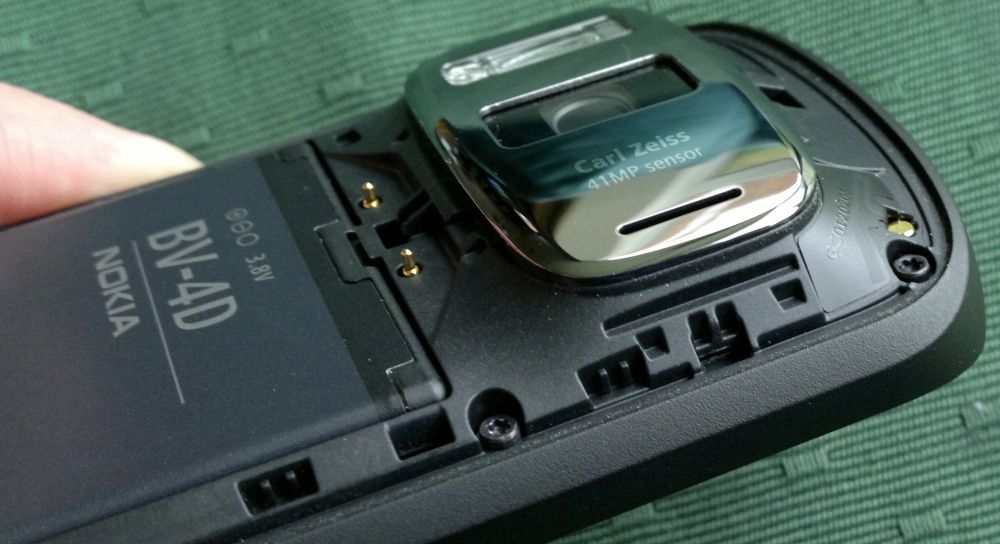
The 808 PureView is shocking to hold for the first time, for two reasons. Firstly, it's heavy - reassuringly so, for a piece of serious engineering in my view, there's no mistaking this for a low end bit of plastic. We're talking serious heft, feeling heavier than the stated 169g. Yet there's not that much metal involved, the body of the phone is all plastic, but sumptuously engineered, crafted and textured. The outer finish is heavily textured and very grippy - the 808 will be a lot less prone to being dropped than the slippery N8.
The second surprise is that, camera-aside, the body of the 808 is actually quite slim, roughly the same depth as the N8, yet with the structure for a battery compartment in place. Towards the sides of the phone, the back chamfers in, in a way that's very comfortable to hold.

The same attention to form extends to the case around the camera island. When I first saw Rafe's photos of the 808's camera 'bare' (shown below in the context of a few classic phone camera modules!), I was shocked - how was something so deep going to be disguised in the body of a 2012 phone? The camera 'hump' is indeed evident and is much deeper than the N8's, but the curves stop the phone from being too ugly and I'd argue that, as with the N8, the camera island makes a good physical feature for locating your fingers.
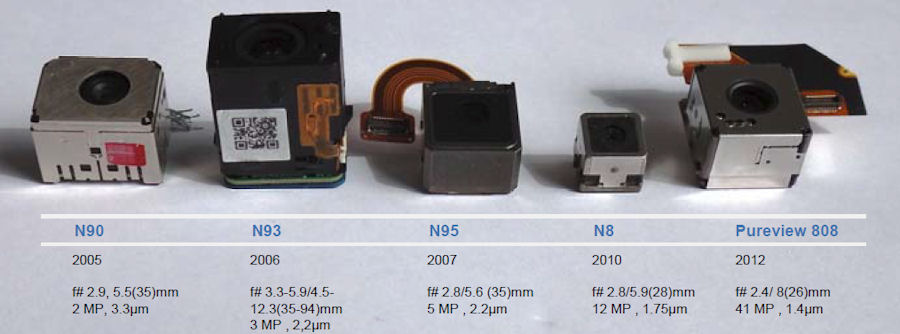
The rear cover peels off, as is the modern fashion, but fits perfectly and with no creaks once on again. In the battery cavity are two slide-and-lift holders for microSD and a microSIM. It's tempting to criticise Nokia for going microSIM for this one last Symbian phone, but this does seem to be the standard in 2012 - that's progress, I guess, and all Nokia's Windows Phones are also microSIM after all. The microSD in this case was my own 16GB card, there's nothing supplied in the box, but then there's 600MB or so of system disk, plus 16GB of mass memory, so a new user shouldn't feel short changed. Plus most of us have numerous microSD cards kicking around by now.

The battery slots in neatly - I'm not sure many people will need to buy an extra cell for daily use, since battery life is easily a day on the 808, but it's very reassuring for any expensive phone to know that, a year down the line when the battery's a bit tired and at 70% capacity, you can simply buy a replacement and pop it in, gaining the original as your emergency spare. This is a facet of modern devices which is often ignored at the manufacturer's and user's peril (I'm looking at Nokia's E7, plus the N8, famously, and HTC and even the mighty Apple here).
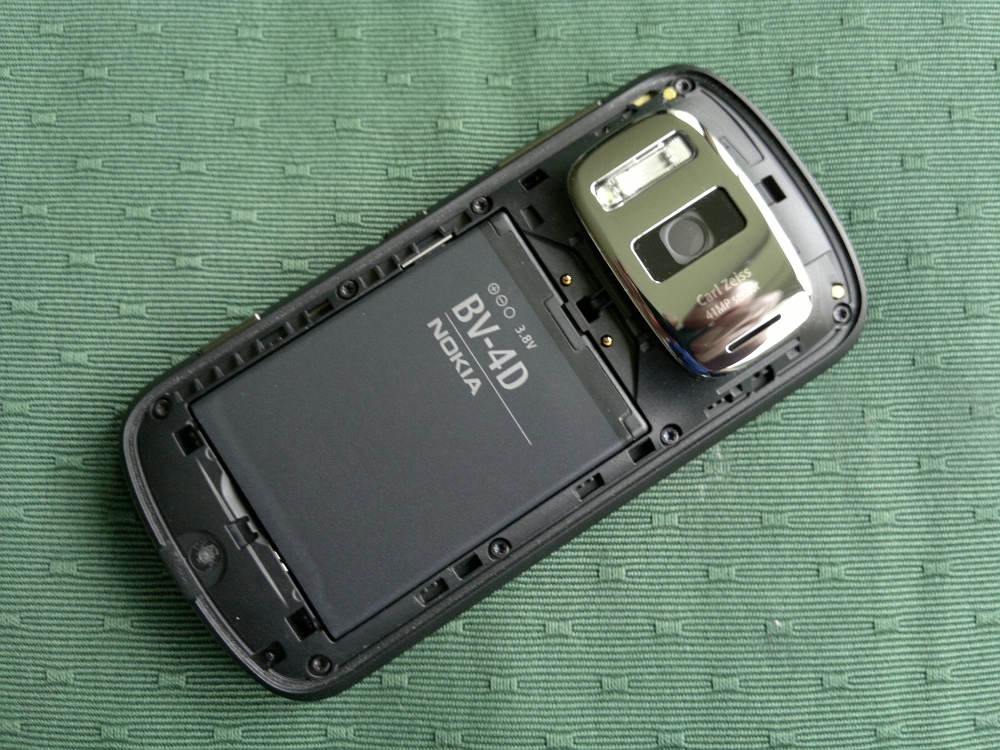
Starting up the 808
Starting up the 808 and going through the usual prompts for Nokia account password and date/time were straightforward enough - I was immediately prompted to download the v112 firmware update, followed by SW_update updates for 'MS Apps', Nokia Social and Maps Suite. In each case a restart was needed, but there were no problems. After which, it was the usual setting up of preferences and installing my core applications, including Gravity (sorry, Nokia Social, I'll cover you in a later review part). My previous purchases were mainly remembered and downloads allowed through the Nokia Store, but one of my games did prompt me to buy it again, annoyingly.
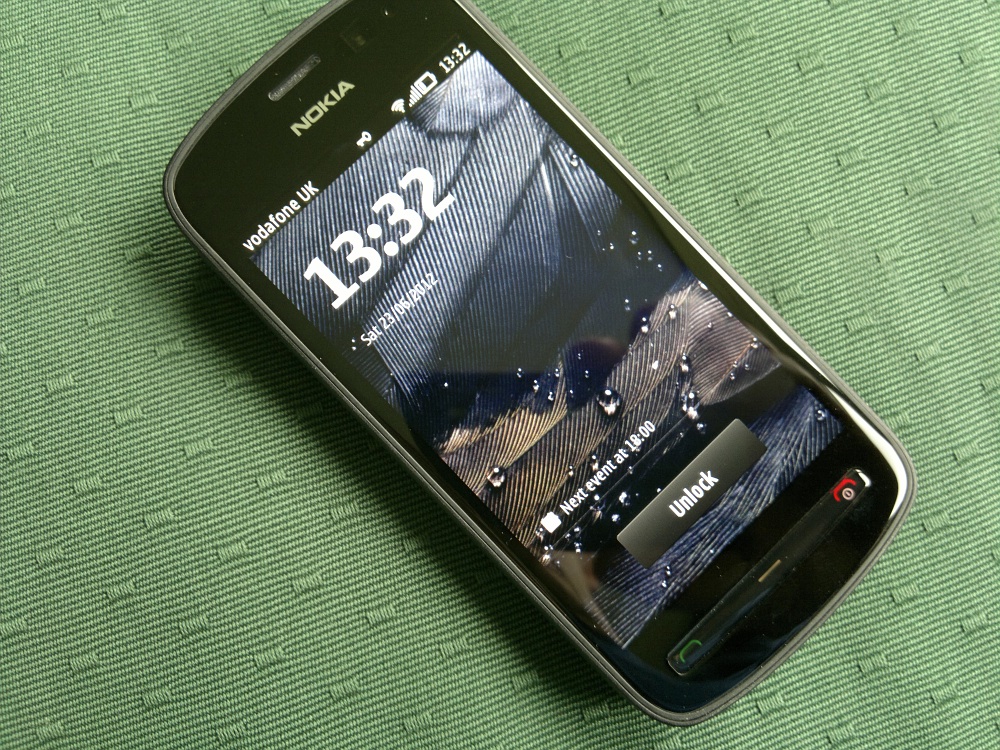
Possible display issues
One thing which I noticed as soon as I'd been into Settings->Phone->Display was that the colour temperature of the AMOLED 'whites' changes when the 808 is set to maximum auto-brightness - there's a tinge of purple to what should be white text on black. It's not clear yet whether this is a hardware or software issue, but I did note that the colour temperature change was only noticeable when the auto-brightness was cranked up - leaving the setting in the default middle position was an easy (and power saving) workaround, though there obviously is an underlying issue here that Nokia should address.
In the photo below, both the 808 and E7 screens are turned up to maximum auto-brightness - you can just see a slight purple tinge on the blocks of screen which should be pure white. Again, note that knocking the setting down one notch causes the issue to disappear completely.
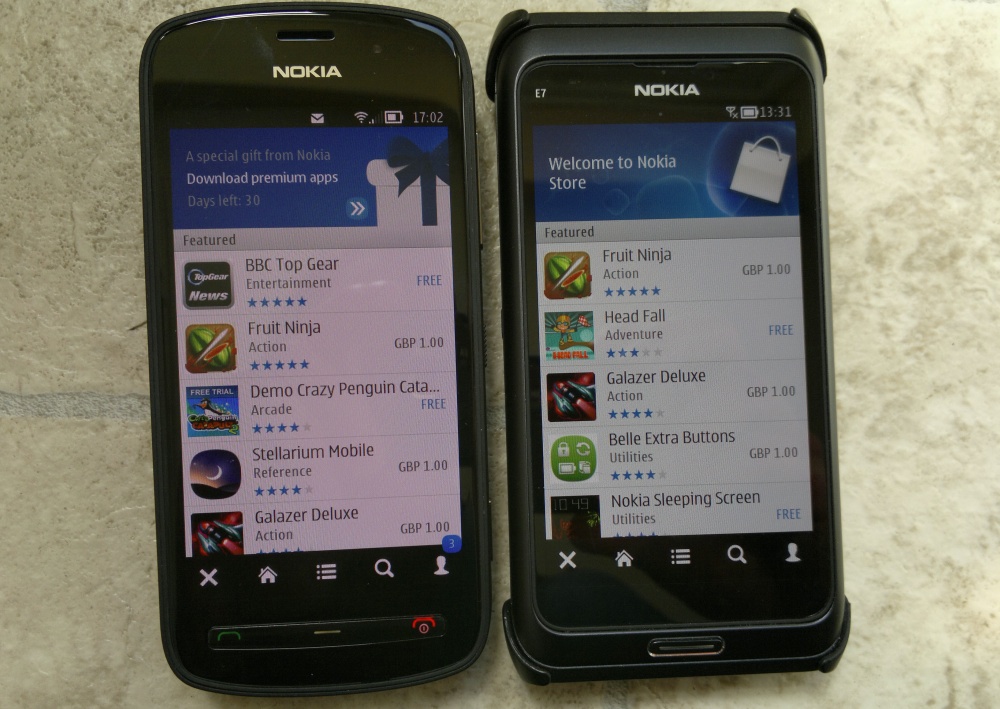
The 4" AMOLED ClearBlack Display is otherwise identical to the screen used in the E7 Communicator - I always loved the E7 screen and it was a pity that the device's other shortcomings (EDoF camera, small/sealed battery) meant that it never really took off. Harnessing the same good display to the raw horsepower and flexibility of the 808 PureView really does give Symbian fans the best of both worlds.
For the N8 owner, moving up to a 4" screen with the CBD polarisers (the N8's hardware design was set in stone before CBD was available) is something of a revelation. Indoors and outdoors, you've simply got a larger and clearer screen for showing off your captured photos and using applications. Out in the sun, in particular, the low reflectivity of CBD means that the 808's display excels as a camera viewfinder, clearer than any other phone on the market (including the likes of the Samsung Galaxy S II and III, in my opinion).
The most controversial attribute of the Nokia 808's display is its nHD (360 by 640 pixels) resolution. Higher resolutions are theoretically supported by Symbian (the E6 has 640 by 480, for example), but the core interface and most applications do rather assume nHD. With Symbian resources stretched at Nokia, I'm not at all surprised that the 'safe' choice to stay with nHD for the 808.
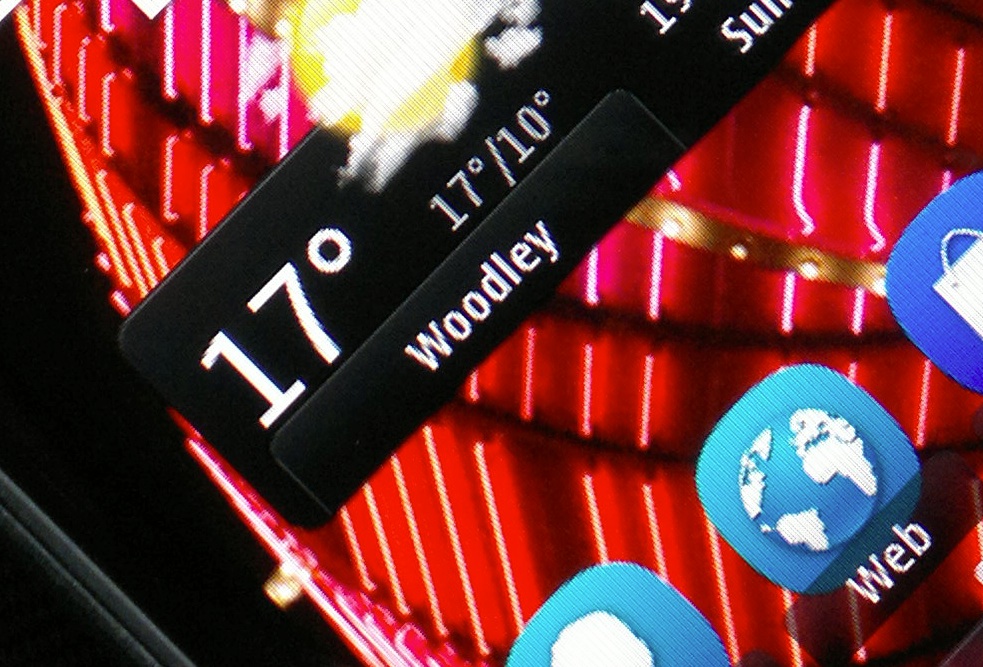
And, in truth, 360 by 640 (genuine RGB) pixels looks pretty good to my 50 year old eyes, perhaps equivalent to a 480 by 800 (WVGA) 'pentile' display, as used by some Android phones. I can tell that the 720p displays on the latest Galaxy Nexus and S III, for example, are less pixellated, I'm not blind, but taking the 808 standalone the 'low' resolution doesn't get in the way of application use and photos still look pretty good, again partly thanks to being true 'RGB' and not pentile. Yes, a direct comparison between the same photo on a 720p display and the 808 would show up nHD as being inferior but it's not, for me, an issue at all.
Unlike on the N8 and E7, which had a protective metal ridge around the display, the 808's Gorilla Glass is convex, curving down at the edges in a manner reminiscent of the glass on the Nokia N9 and Lumia 800, though not curved to the same degree. The end result is a pleasant swiping experience though, with no intrusive ridge interfering with the user's finger. The slightly raised button bar at the bottom and a slight lip on the screen's top raise the display fractionally off a hard desk, though with the tough Gorilla Glass such precautions shouldn't really be necessary.
THAT camera
Obviously, as detailed above, I'm going to go into a massive amount of detail on the capabilities of the 808's camera in future review parts, but for now note that it's outstanding. Amazing. Whatever superlative you want to throw in. For the camera dunce, it's almost impossible to take a bad photo, since light is taken out of the equation - the huge sensor and aperture, plus PureView oversampling/noise reduction, mean that low light situations are still very usable, while the double-strength Xenon flash means that even a pitch dark room is floodlit and moving subjects are nicely frozen. For the camera phone enthusiast (me, plus your good self, probably, if you've read this far), there's a massive amount of fun that can be had playing with the PureView zoom and a multitude of 'creative' settings.
To whet your appetite, here are a few of my PureView photos taken in the last few days with the 808, click on each to enlarge or download at full size (as appropriate):
And, if your bandwidth can stand it, click the one below for an arty (well, I thought so...) 11MB, 38 megapixel resolution image taken in 'Creative' mode:
Video recording is also excellent, though again you'll have to wait for a future review part since I intend to push the 1080p capture and Rich Recording to its limits (think front row at rock gig)...
I loved getting straight into the Camera by long pressing on the shutter key from the locked phone. We're talking less than a second and you're ready for action. Keep the shutter key pressed and a photo is taken automatically, so you can spot something transient, hold up the locked 808 with the shutter key pressed and a photo will get taken around two seconds after you first started pressing the shutter key.
Media consumption
Media playback is stunning on the 4" CBD display, with the resolution caveat from above. Every video file I threw at the Nokia 808 played perfectly, it even beat the recently reviewed Samsung Galaxy S III in terms of codec compatibility - not bad for 'old' Symbian. Music playback over headphones was stunning - as indeed it was on the N8, mind you. Usual Nokia music chip quality. More on media playback options in the appropriate review part.
The speaker in the 808 is the same excellent power-amplified component as in the N8, which means a good frequency range and excellent volume. One testament to the volume produced by the 808 is that I was playing music on it, while testing, and my wife came in from another room to ask me to 'turn the music down please'. Harumph.

Although producing sound through a 'slot' (as on the N8), the curve of the camera island does make it more likely that there will be clear air beneath the phone, i.e. it's much harder to dampen the sound by putting the 808 down on a surface.
OS and applications
Running Nokia Belle Feature Pack 1, most of the interface and applications were very familiar to me from the Nokia 701, though I'll come back to the software suite in a future review part, of course. Where there were differences it was in the camera and general image handling - while the Camera app UI is understandably very different, Gallery on the 808 will come as something of a shock to hardened N8 owners. Being able to longpress on image thumbnails to get access to a range of actions, being able to work in landscape mode, and being able to select multiple images (e.g. for deleting) are things we've all got very used to and they're completely missing in the v112 firmware.
Reading between the lines, Gallery had to be completely rewritten to handle the 38 megapixel images and to use the custom image processor for doing the heavy lifting. Add in ever-decreasing Symbian development resources at Nokia and what we've got is Gallery 'Lite', with just the bare minimum functions and 'hooks' to other system services. I wouldn't have thought it a huge undertaking to compile in most of the functions from the standard Belle FP1 Gallery code though, so surely we'll see a 'Software Improvement' issued through SW_update, over the air, that will restore most (if not all) of the missing features?

Falling in love...
If there's a takeaway or endorsement from this part 1 of my Nokia 808 PureView review, it's this. Despite the few caveats above, and despite having told Rafe that I was going to run the 808 in parallel to the N8 because I "didn't want to cut up my 16 year old main SIM card to fit the microSIM slot", a mere 24 hours after receiving the 808 I was so impressed by it that I marched into the Reading Vodafone store. Ten minutes later and I had a microSIM with my existing number on, the 808 was promoted to my main day to day device and the N8 was sitting sadly in a drawer back home.
The Nokia 808 PureView has taken me by surprise. I knew it would be better than my N8, I knew I'd like it, I knew it was almost purpose built for my needs (screen/camera/Xenon/speaker/FM transmitter, etc.)
What I hadn't reckoned on was falling head over heels in love with the thing.
Part 2a of this review coming very soon. Watch this space - trust me, there's a lot of testing to be done!
Reviewed by Steve Litchfield at

